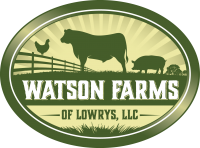Through this blog series we would like to bring you along with us to show you how we have adapted in the past and how we intend to adapt going forward. We have made some big changes lately to our operation, and we want to show you how we got here, and how you can join us in our mission to be better farmers.
In this issue of the series, we will see our family make one of the biggest changes that any farm can make – a relocation.
In the late 1970s, after visiting a daughter in South Carolina, my grandparents, Jim and Anna, decided to escape high land prices and harsh winters and purchased the farm that we currently operate in Chester and York counties. Gary also moved down in 1980 after selling the Indiana farm and purchasing another farm in Chester County. The plan was to expand their row crop operation with the main crop being corn. The first few years were very successful, and they continued to expand even purchasing another farm in York County and had about 1200 acres planted at the peak.

One key to their corn operation was the source of nitrogen they used. It’s called anhydrous ammonia, and it is injected into the soil with an applicator that has knives fed from a pressurized tank much like a propane tank. While this method is effective at making the plant grow fast, it also has downsides such as difficulty in handling and the inherent danger of a pressurized gas capable of severe burns. In 1989, as my dad was transferring the product from one tank to another a hose that he was close to burst. He had to spend some time in a burn hospital and doctors though he might be blind, but thankfully he was able to make a full recovery. As we will discuss in another part of this series, one viewpoint that we have developed is that farms should be family friendly. Chemicals create dangers on farms along with a host of other problems.
Their method also relied on deep and heavy tillage with the thought being that the soil acts as a sponge and the deeper your sponge the more the corn plant can access water. But no matter how deep the sponge is, you have to have rain for it to absorb. The inconsistent rainfall in the Southeast eventually proved to be a primary obstacle in relying on a crop such as corn for such a large portion of the farm’s revenue.
By the early 1990s the decision was made that in order to help satisfy the bank and avoid bankruptcy our family would need to sell around 1000 acres and some equipment. We were able to lease some of the farmland back for a time and transition to another crop that had long been a staple in the south: cotton. But cotton production and harvesting methods were rapidly changing at this time. Round-up Ready (genetically modified) seed was starting to be available which would allow the crop to be sprayed “over the top.” The glyphosate chemical would kill weeds and grass, but the crop would remain unharmed. Also, many of the local cotton gins were closing, and harvest methods were shifting from wagons to modules which could be transported more efficiently to gins further away. For us, this meant that some of the recently acquired equipment was going to be obsolete soon.
Some years were better than others, but among drought, the farm crisis of the 1980s, a changing cotton industry, and a number of other exacerbating issues, the Watsons were once again looking to make changes in order to survive in agriculture. This transformation had to be more robust than merely gearing up for a different crop if Watson Farms was to stay intact. Some of the changes we will see in the next part of this series are a new venture into contract poultry in the mid-1990s and integrating the next generation into the farming operation. Stay tuned!
The article and photo below was published in The Herald newspaper highlighting the unconventional practices used by my dad and granddad.

